Vatican City
As the smallest independent state in the world, it’s easy to pretend that a visit to Vatican City during your stay in Rome doesn’t involve leaving the country of Italy – but technically speaking, that’s just what you’re doing.
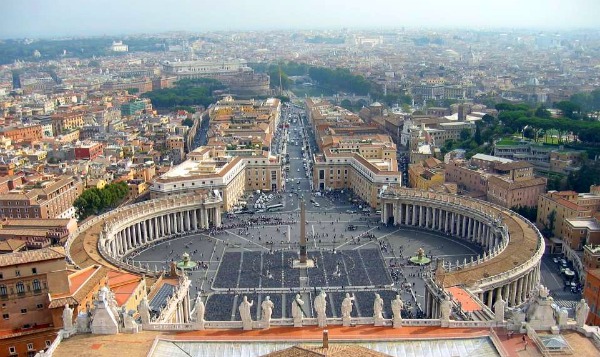
Vatican City is a tiny walled enclave on the western side of the Tiber River in Rome. The city-state covers roughly 110 acres, and although it’s incredibly small it contains some of the most popular attractions in the entire Italian peninsula.
The Catholic Church is the whole reason for the existence of Vatican City, but although the church itself and many of the monuments in Vatican City date back hundreds of years the city-state wasn’t established officially until 1929. The area was settled in the 1st century A.D., and when the first church built on the spot where St. Peter’s Basilica now stands was constructed in the early 4th century, the surrounding land started to become more populated.
From the 4th century through the mid-1800s, the area then called the Papal States (now known as Vatican City) was essentially ruled by Popes. With Italian unification in 1861, however, the new country claimed the Papal States as part of Italy. The church said Italy had no right to govern the Vatican, and Italy didn’t try to oust the Pope from his palace, but the argument over just who ruled over this small patch of land went on for almost 70 years and is referred to as the “Roman Question.” Finally in 1929 the Lateran Treaty was signed, with Italy giving the Holy See complete sovereignty over Vatican City.
The differences between the “Holy See” and “Vatican City” are complicated, but the short version is this – the Holy See isn’t a country, but rather the official seat of the bishop of Rome’s Catholic Church. Vatican City is the country, and the only entity of the two that can issue passports. Confusingly, however, ambassadors aren’t sent to Vatican City, but to the Holy See.
Thankfully for visitors, these distinctions don’t matter all that much. What matters to most tourists is that they’re visiting the world’s smallest city state, and that they’re able to see the incredible treasures within its borders just by taking a bus across Rome.
On the page below, you’ll find an overview of travel information for Vatican City, including links to other articles on WhyGo Italy to help you plan your Vatican City trip. If you have trouble finding what you’re looking for, please let me know.
>> Note that the indication of where Vatican City is on the map to the right is approximate.
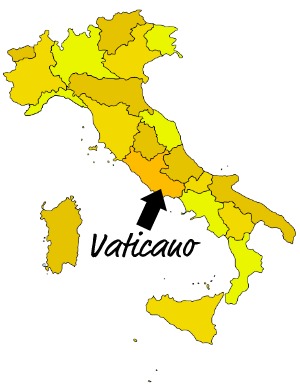 Quick links to Vatican City travel resources:
Quick links to Vatican City travel resources:
Vatican City: Fast Facts
- The Italian name of the city state is Stato della Città del Vaticano, which is pronounced STAH|toh DEL|la chee|TAH del vah|tee|KAH|noh, although it’s often shortened to simply Il Vaticano.
- The capital of the Vatican City State is technically Vatican City, but since it’s a city-state then the city and the state are one and the same.
- The whole of Vatican City is a UNESCO World Heritage Site.
- Vatican City is an enclave within Rome, entirely surrounded by the Italian capital city.
- The Vatican Gardens make up more than half of the land included in Vatican City.
- Vatican City is not part of the United Nations, although the Holy See has “permanent observer status” at the U.N.
- The list of people actually born in Vatican City is incredibly short, but one name that does pop up is English shipbuilder Sir John Isaac Thornycroft. Since he was born in 1843, however, before the Lateran Treaty, his birth pre-dates the official creation of the Vatican City State. Vatican City today doesn’t have a hospital that’s equipped for births, so even those who reside within its borders go into nearby Rome in order to have their babies.
- While Vatican City isn’t technically part of the European Union, it is on the euro currency. Vatican City does mint its own euro coins, as well, and they’re quite collectible.
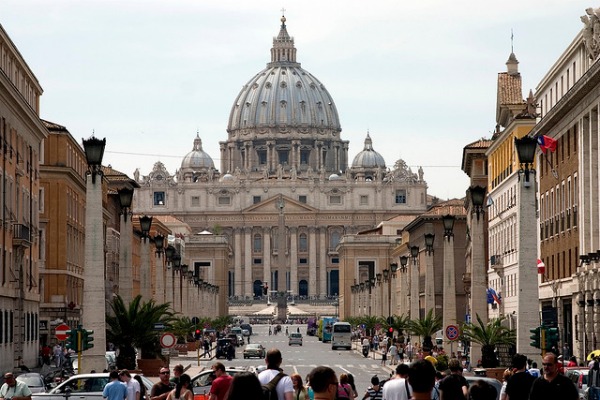
Where to Stay in Vatican City
Since Vatican City is a tiny place surrounded by Rome, looking for accommodation in Vatican City is essentially like lookiing for accommodation in a particular neighborhood in Rome. As small as it is, Vatican City does have a good selection of hotels and hostels as well as apartment rentals – they’re as much for visiting pilgrims and people on church business as they are for tourists.
Vatican City is across the river from big Roman attractions like the Colosseum, Forum, and Pantheon, but it’s on the same side of the river as the popular Trastevere neighborhood. Regardless of whether you stay right in Vatican City or elsewhere in Rome, it’s easy to get back and forth using the convenient bus system in Rome. One of the city’s Metro lines does run relatively close to Vatican City, too.
Here are some links to articles about hotels and hostels in some of the cities in Vatican City:
- Hotels Near Vatican City
- Hostels in Rome Away from Termini Station (some in/near Vatican City)
- Budget Rome Hotels Near the Colosseum
- Family-Friendly Hotels in Rome
- Romantic Rome Hotels
- Rome Hostels Near the Colosseum
- Vacation Rentals in Rome
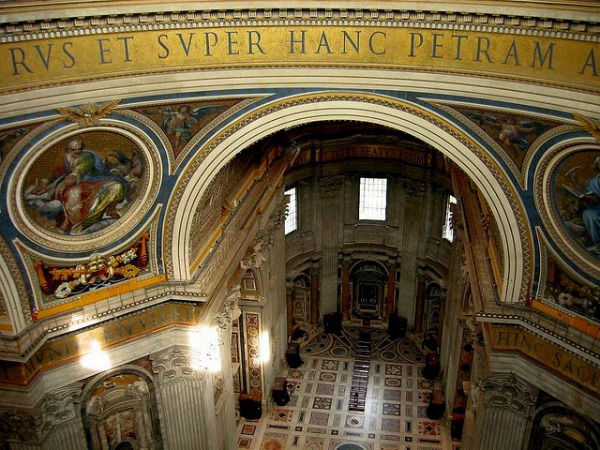
What to Do & See in Vatican City
The big attractions on a must-see list for Vatican City are much the same as a must-see list for Rome. Most people will spend, at most, a day of their Rome trip touring the sights of Vatican City, and that’s usually plenty of time – provided you’ve got a good guide. The Vatican Museums alone could take weeks of exploration, so making sure the important pieces are pointed out to you can be the difference between a pleasant visit and museum boredom. Of course, if you’re familiar with some of what’s in the Vatican’s collection and you want to spend more time in the museums, then a longer stay in Rome and a few days spent wandering through the galleries isn’t a bad option, either.
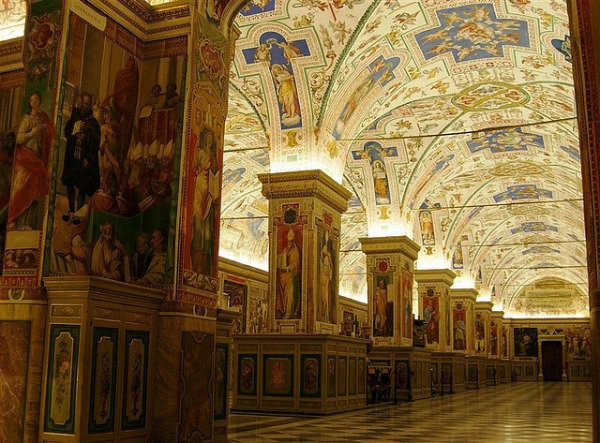
The centerpiece of Vatican City is St. Peter’s Basilica and the enormous piazza in front of the church, and blissfully both of these sights are free to visit. There’s a strict dress code to visit the church, and it’s enforced at every entrance (so don’t try to get in with shorts or a tank top on).
For those of you who are stamp collectors, or who still send postcards, remember that because Vatican City is a separate country you can buy stamps at the Vatican post office and mail things there, too. Given how unreliable Italy’s postal system is, this isn’t a bad idea – many Romans who live near Vatican City use the Vatican’s post office when possible.
Oh, and although this “to-do” item will take you all of a minute, it could be fun for those of you who learned Latin back in the day – bank machines in Vatican City have a Latin language option.
Here’s more information on a couple of the things to do and see in Vatican City:
Couple of notes that will help you with your Vatican City to-do list:
- Vatican Tourist Information Office – To get more information on your own, there’s a tourist information office in St. Peter’s Square, just to the left of the Basilica. It’s open Monday through Saturday from 8:30am until 7:30pm.
- Vatican Gardens – The Vatican Gardens are open to visitors, but only with a guided tour through the Vatican tours office. These tours leave from the Vatican Museums, so inquire there about departure times. Note that “proper dress,” i.e. the same thing that you’ll be required to wear to get into St. Peter’s, is required for the gardens as well.
- Seeing the Pope – If you’re interested in seeing the Pope, check the news to make sure he’s in town and go to Vatican City on Sunday or Wednesday. You can try your luck, especially in the summer, by showing up and seeing if there’s a crowd gathering in St. Peter’s Square (if there’s a stage set up, you know you’re in luck). If you get there before his entrance, you might even get to see him zip through the crowd in the famous Pope-mobile. To get inside the gated area, you’ll need a ticket – but you can hang around outside it and still see the Pope (from that distance he’s small, but there are jumbo screens so you’ll get to see his face). For the more devout, you can arrange for something more personal (i.e., groups of hundreds instead of thousands) by calling 06-6988-4631. That’s also the number to call to just find out the specifics of the Pope’s schedule.
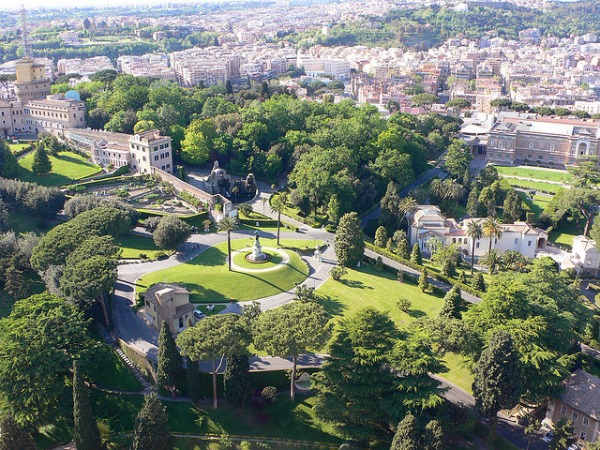
photos, top to bottom, by: Leo-seta, Otourly, jimmyharris, Leo-seta, xiquinhosilva, heatheronhertravels.com (from Flickr here)